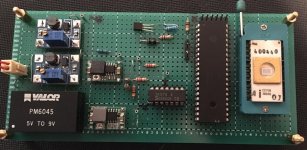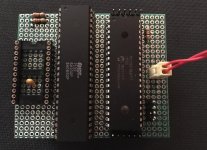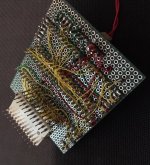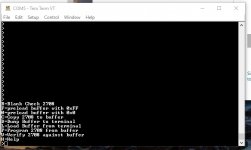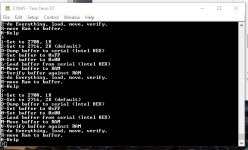Dwight Elvey
Veteran Member
I was looking at the memory usage of the Maneuver board program. I believe if you only enter one target ship one can run it on just two 4002-1's, rather than the full complement of 5ea 4002-1's and 4ea 4002-2's that would allow 10 target ships.
If anyone is interested, I have it posted on GitHub.
Slob would need to modify the display to handle the non-7segment displays. That wouldn't be too much work though.
It would be more work translating my assembly code to work with a different assembler. It is almost 4K of code. You might need to make some hardware to deal with the 25 switch keyboard but I'd think some arduino work and a couple more LS244s would be enough to deal with a fake keyboard from a PC on serial or usb.
My PC board is coming along. I'm fighting the frustrating KiCad footprint library. The footprints they have are never exactly what I want it is is an uphill battle to get the footprint I want to select. It is confusing. I wanted to use different IC boarders and such but it seems to fight my all the way. The 7seg displays have only 12 pins instead of 14. I made the display schematic piece from a 14 pin part but left those pins there. The footprint I made was missing 2 pins and the tool wouldn't let me use the 12 pin one with the 14 pin schematic, even though I made the pins as no connects. It was frustrating. I needed to go back and fix my schematic element to remove the pins that were not there.
As I said, things are coming along, just a little slow. It prints out a pile of error since my switch are treated a passives and a bunch of input have no source. I don't know if I'll just leave it that way and ignore the errors.
Dwight
If anyone is interested, I have it posted on GitHub.
Slob would need to modify the display to handle the non-7segment displays. That wouldn't be too much work though.
It would be more work translating my assembly code to work with a different assembler. It is almost 4K of code. You might need to make some hardware to deal with the 25 switch keyboard but I'd think some arduino work and a couple more LS244s would be enough to deal with a fake keyboard from a PC on serial or usb.
My PC board is coming along. I'm fighting the frustrating KiCad footprint library. The footprints they have are never exactly what I want it is is an uphill battle to get the footprint I want to select. It is confusing. I wanted to use different IC boarders and such but it seems to fight my all the way. The 7seg displays have only 12 pins instead of 14. I made the display schematic piece from a 14 pin part but left those pins there. The footprint I made was missing 2 pins and the tool wouldn't let me use the 12 pin one with the 14 pin schematic, even though I made the pins as no connects. It was frustrating. I needed to go back and fix my schematic element to remove the pins that were not there.
As I said, things are coming along, just a little slow. It prints out a pile of error since my switch are treated a passives and a bunch of input have no source. I don't know if I'll just leave it that way and ignore the errors.
Dwight
Last edited:

